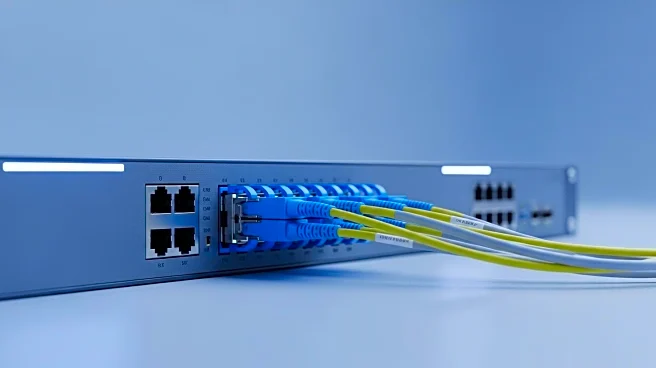What's Happening?
Optical LAN is emerging as a transformative solution for healthcare IT infrastructure, offering a future-ready network that simplifies deployment, enhances scalability, and reduces operational costs. This technology supports all digital services on a single converged network, including real-time diagnostics, IoT, cloud services, Wi-Fi, and telemedicine. Optical LAN reduces cabling needs by up to 70% and minimizes complexity, leading to a lower total cost of ownership by up to 50%. It is designed to meet the growing demands of healthcare environments, where reliability, security, and sustainability are critical. The infrastructure is built for performance, supporting speeds of 10G and 25G, with future-readiness for 50G and 100G, ensuring virtually unlimited bandwidth for decades.
Why It's Important?
The adoption of Optical LAN in healthcare IT is significant due to its potential to drastically reduce both capital and operational expenditures, thereby lowering the total cost of ownership. This technology is particularly beneficial for healthcare providers aiming to deliver high-quality care while managing costs. Optical LAN's energy efficiency, requiring fewer switches and active electronics, translates into lower electricity bills and a smaller carbon footprint, aligning with sustainability goals. Additionally, its inherent security features, such as built-in encryption and network segmentation, safeguard sensitive patient data, meeting the high security standards required in healthcare settings.
What's Next?
Healthcare providers are likely to continue adopting Optical LAN as they seek reliable, scalable, and sustainable network solutions. The technology's ability to support future bandwidth needs without disruptive upgrades positions it as a long-term investment for hospitals, clinics, and senior care facilities. As more institutions recognize the benefits of Optical LAN, there may be increased demand for its implementation, potentially influencing broader industry standards and practices. Stakeholders in healthcare IT may focus on further integrating Optical LAN with emerging technologies to enhance patient care and operational efficiency.
Beyond the Headlines
Optical LAN's impact extends beyond immediate cost savings and efficiency improvements. Its adoption could lead to a shift in how healthcare facilities design their infrastructure, prioritizing space for patient care over networking equipment. The technology's sustainability features may also contribute to healthcare providers' efforts to achieve green building certifications and meet environmental, social, and governance (ESG) targets. As the healthcare industry continues to evolve, Optical LAN could play a crucial role in supporting digital transformation initiatives, enabling more advanced and patient-centric services.










